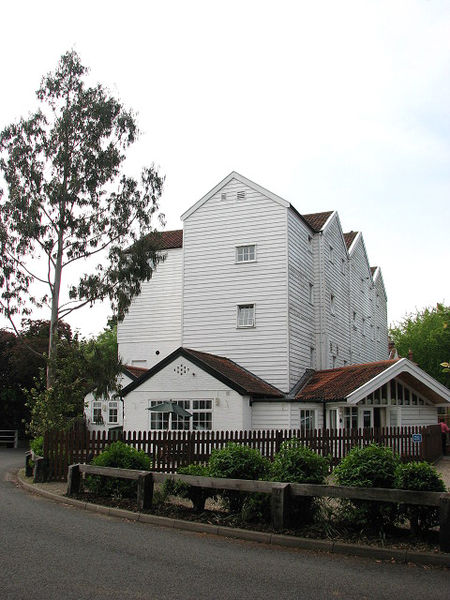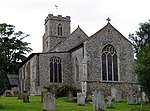Buxton with Lamas

Buxton with Lamas is a civil parish in Broadland in the English county of Norfolk. It comprises the villages of Buxton lying to the west of the River Bure and Lamas on the eastern side of the river. At this point the River Bure is crossed by the Bure Valley Railway on a 105-foot (32 m) long girder bridge. Buxton has a halt on the railway. The former railway station on the Great Eastern Railway was called Buxton Lamas prior to closure of the line. For local government purposes, the two villages jointly elect Buxton with Lamas Parish Council, and fall within the area covered by Broadland District Council and Norfolk County Council. The civil parish had a population (including Little Hautbois) of 1,685 at the 2001 census, falling marginally to 1,684 at the 2011 census. A rather grand white water mill also crosses between Buxton and Lamas.
Excerpt from the Wikipedia article Buxton with Lamas (License: CC BY-SA 3.0, Authors, Images).Buxton with Lamas
The Street, Broadland Buxton with Lamas
Geographical coordinates (GPS) Address Nearby Places Show on map
Geographical coordinates (GPS)
| Latitude | Longitude |
|---|---|
| N 52.7587 ° | E 1.3263 ° |
Address
The Street
The Street
NR10 5AF Broadland, Buxton with Lamas
England, United Kingdom
Open on Google Maps







